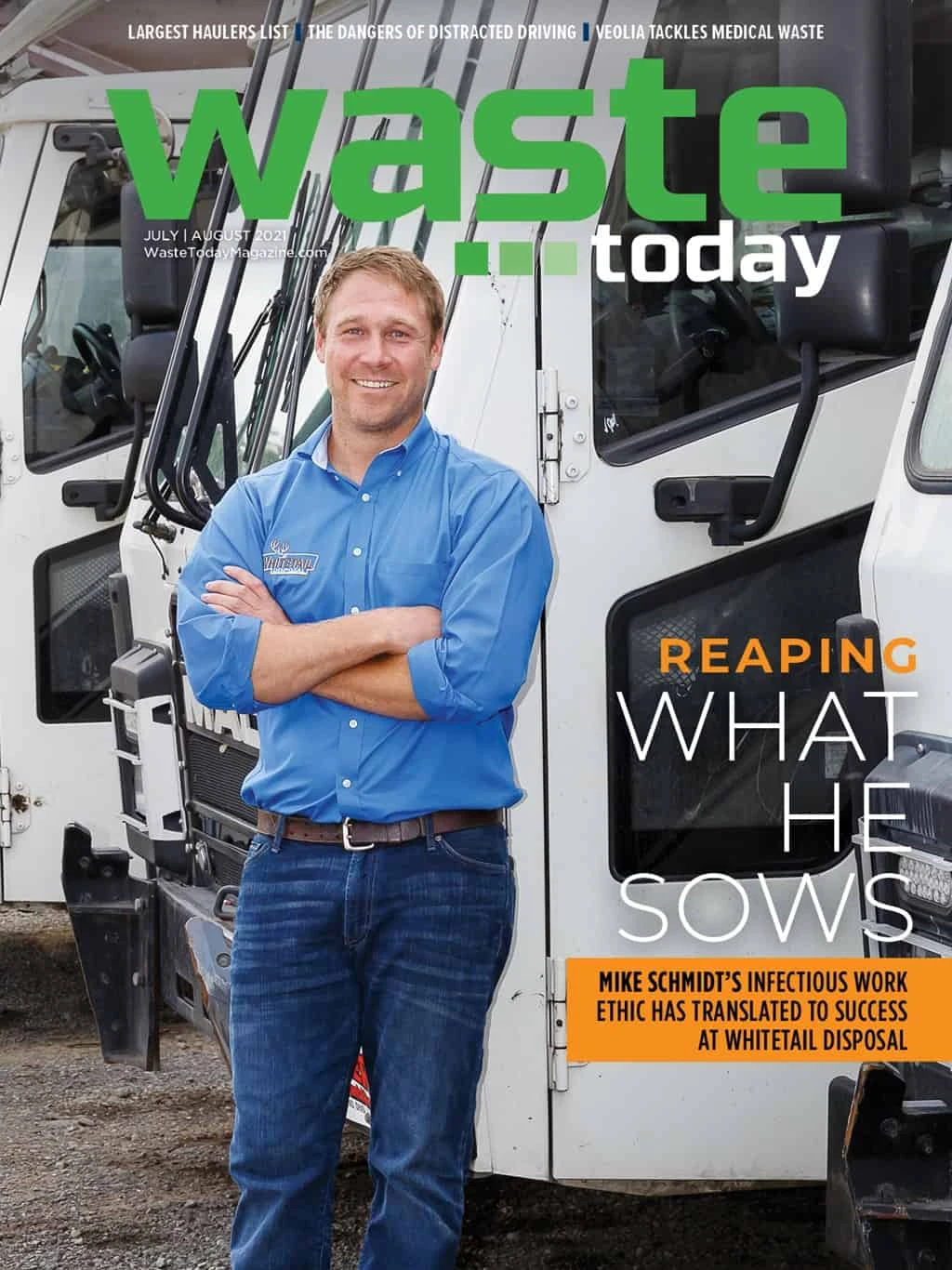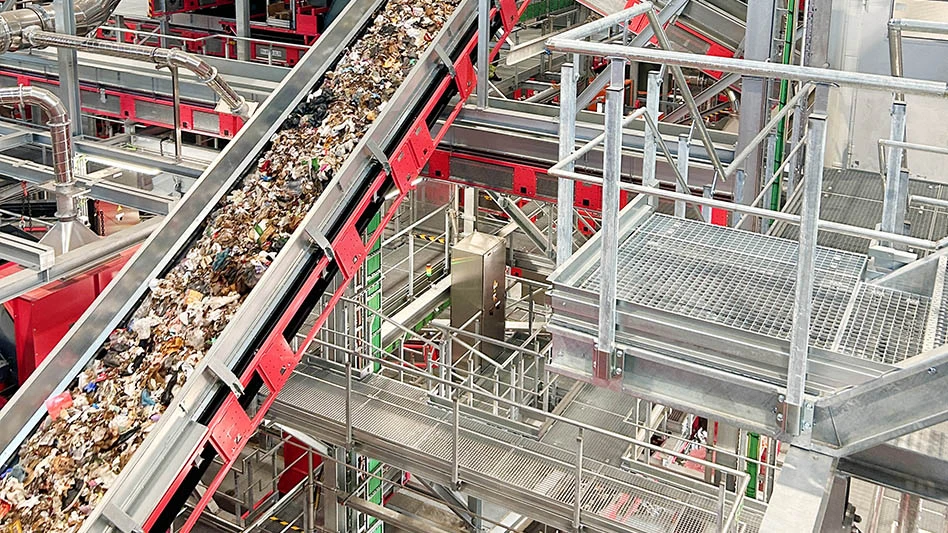
Since the company’s founding in 1957, Liberty Ashes Inc.—one of the oldest waste haulers in New York City—has worked to establish itself as a leader in the waste removal and recycling industry.
Taken over by brothers Michael and Stephen Bellino shortly after their father’s passing in 1969, Liberty Ashes started with only three trucks and 200 customers in Queens. Today, the company boasts 20 trucks and close to 4,000 commercial customers across Queens, Brooklyn and Manhattan.
“My brother and I took over the business basically when we were just getting out of high school,” says Michael Bellino, co-owner of Liberty Ashes. “We’ve been running the business ever since and have always been looking to find better ways to service our customers.”
With environmental concerns and innovation in mind, Bellino says the company’s most recent venture has revolved around integrating electric vehicles into the company’s current fleet.
In June, Liberty Ashes announced the purchase of two battery-powered, electric refuse trucks from Crane Carrier Company (CCC), an Ohio-based business unit of Battle Motors in Los Angeles. According to a press release, the company will be using one Battle One Severe Duty Refuse (formerly LET) model and a Battle One Crew Cab (formerly LET2) truck to serve customers in four New York boroughs and two counties on Long Island.
INCREASED DEMAND
The investment comes amidst an increased demand for electric refuse vehicles in New York City following a February 2020 executive order by NYC Mayor Bill de Blasio mandating a fully electric municipal fleet by 2040.
The ambitious goal is an expansion of de Blasio’s previous December 2015 NYC Clean Fleet sustainability plan to create the largest electric vehicle fleet of any American city and reduce New York’s municipal vehicle emissions by half by 2025 and by 80 percent by 2035.
“[When] we started looking into [electric refuse trucks], we were looking for availability, and we really couldn’t find any,” says Bellino. “Crane Carrier was the first [company] that came to us with an actual delivery date that wasn’t two years in the future.”
With over 180 dealers located across North America, Battle Motors CEO Michael Patterson says the company has been busy keeping up with an influx of orders from haulers throughout the U.S.
“We’re delivering 120 electric refuse trucks over the next three months. Then we’re going to be delivering 200 electric trucks per month in 2022,” he says. “Pretty much every major city is buying one or two electric trucks; we’ve already sold out everything we could make in 2021.”
In total, Battle Motors has plans to electrify over 5,000 private refuse trucks in New York City over the coming years.
To keep up with the increase in production, Patterson says the company is nearly tripling the size of its production facility in New Philadelphia, Ohio, from 125,000 square feet to 350,000 square feet. Battle Motors also plans to construct another facility on the West Coast, he adds.
SIGNIFICANT ADVANTAGES
Liberty Ashes, which anticipates the delivery of its Battle One models in September, will be the first private sanitation and recycling company to use electric refuse trucks in the New York area.
After purchasing several CNG trucks from Crane Carrier’s New York-based dealer Milea Truck over the past decade, Bellino says the longstanding relationship between the companies helped seal the deal on their most recent investment.
“We’ve bought four or five vehicles [through] Milea,” he says. “We love the low-entry vehicle design; we love the visibility, and we love the safety features that [Crane Carrier] trucks offer. Obviously, safety is a big part of our decision-making.”
Featuring an 18-inch step-in height, a large flat glass windshield, a steel fabricated severe-service cab shell and a remote-mounted 1,814-square-inch radiator, Battle Motors says the Battle One models include several features to maximize safety, increase space and enhance maneuverability.
For Bellino, however, the biggest safety advantage has been the trucks’ regenerative braking system.
“The regenerative braking system kind of recharges the battery system from the inertia of the vehicle moving, so it actually slows the vehicle down as soon as you take your foot off [the pedal],” he says. “It uses the kinetic energy [from] the motion of the vehicle to actually fuel that rotary motion and it just slows down naturally. So, the vehicle will come to a natural stop as opposed to any other vehicle or car that will just continue to cruise.”
In addition to safety, the electric models have a modular battery pack design that Patterson says can offer significant cost savings.
“[With the modular battery pack], we only deliver the amount of energy that you need,” he says. “You don’t want to sell someone a battery pack that’s 396 kilowatt hours when you only need 200 kilowatt hours because you’re just adding expense. So, there’s no reason that the customer should pay for a battery they don’t need.”
By utilizing an electric motor from Wilsonville, Oregon-based Cascadia Motion, Patterson adds that the Battle One series offers lower maintenance costs, reduced noise and zero carbon emissions. The trucks also include a comprehensive software suite, which provides truck parts inventory, service history and diagnostics for users.
“Refuse fleets are perfect to go to EV because they typically have a short range. Almost 90 percent of all refuse trucks go less than 150 miles a day because they run the same routes, so most fleets return to the garage at nearly the same time every day where they can be plugged in for 12 hours before they get on the road again.” - Mike Peterson, CEO, Battle Motors
FUTURE PLANS
According to a recent study conducted by Battle Motors, the average electric vehicle user in the refuse industry will save roughly $12,400 a year in diesel fuel costs per truck. When considering the potential cost savings as well as the nature of the refuse hauling industry, Patterson says waste trucks are ideal for the transition to electric.
“Refuse fleets are perfect to go to EV because they typically have a short range,” he says. “Almost 90 percent of all refuse trucks go less than 150 miles a day because they run the same routes, so most fleets return to the garage at nearly the same time every day where they can be plugged in for 12 hours before they get on the road again.”
In pursuit of a fully electric fleet, Liberty Ashes has recognized this opportunity and is currently pursuing plans to retrofit the company’s existing diesel trucks to electric.
“We’re going to get a conversion company that we’re doing a joint venture with in New York to partner with us to actually do existing conversions, in addition to purchasing new vehicles from Crane Carrier,” says Bellino. “This will be the biggest change in our fleet that we’re going to undertake, and we’re pretty excited about this—electric is the future.”
The company is also in the process of building a waste conversion facility in Queens that will have the capacity to convert municipal solid waste into natural gas fuel for its current CNG vehicles.
“The [waste conversion facility] has been a long, tedious research project for probably half my life,” Bellino says. “The finished system will be operating in New York very shortly. Our facility will be [processing] approximately 600 tons a day, and the resulting gas will go directly into the National Grid [utility] pipeline that’s in the street.”
Get curated news on YOUR industry.
Enter your email to receive our newsletters.

Explore the July August 2021 Issue
Check out more from this issue and find your next story to read.
Latest from Waste Today
- US Senate backs reduced cuts to EPA
- ELV Select Equipment, Reworld aid NYPD in secure firearm disposal
- Waste Connections announces Q2 results
- Returnity and Cosmoprof to address reusable bag waste
- SWANA releases report on aging WTE facilities
- New economic assessment reveals cost benefits of California’s SB 54
- Premier Truck Sales & Rental opens new facility
- TeknTrash Robotics, Sharp Group partner on humanoid robot pilot





